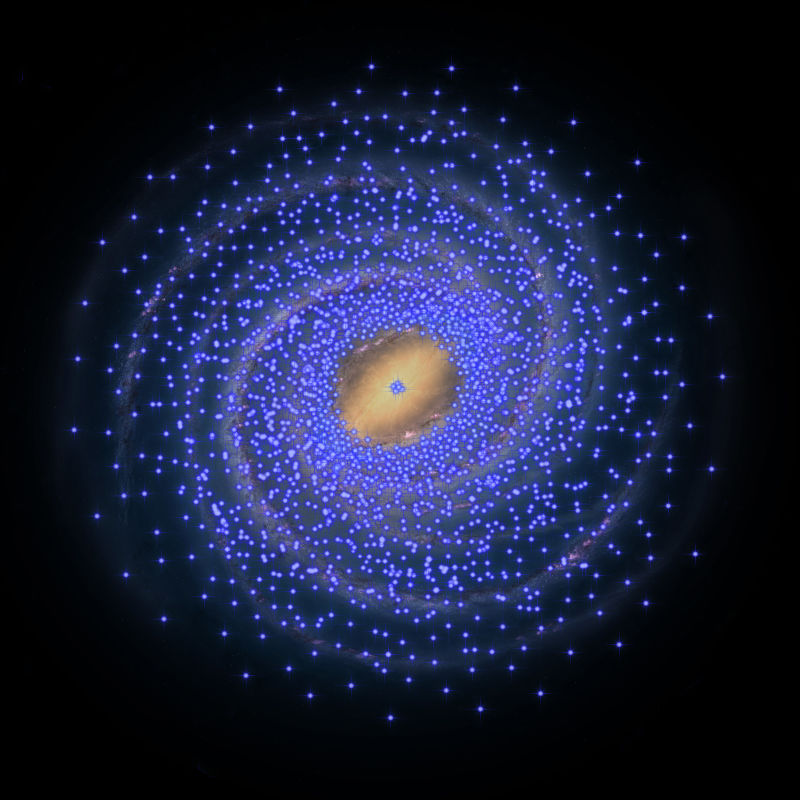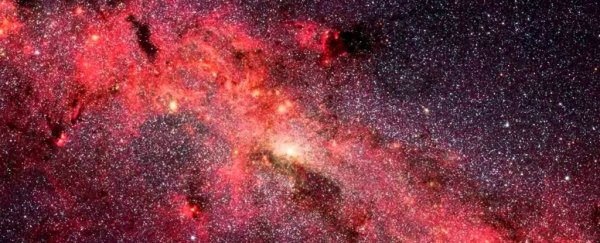An international team of astronomers has discovered a 'stellar void' near the centre of our Milky Way galaxy that's completely devoid of young stars known as Cepheids.
The find suggests that, although there are Cepheids inside the Milky Way's 'heart', there are no young stars in the surrounding Extreme Inner Disk region - an area that stretches roughly 8,000 light-years out from the galactic centre.
"We already found some while ago that there are Cepheids in the central heart of our Milky Way (in a region about 150 light-years in radius)," said team member Noriyuki Matsunaga, from the University of Tokyo. "Now we find that outside this there is a huge Cepheid desert extending out to 8,000 light-years from the centre."
You can see the void in the image below, with the blue circles representing Cepheids, and a clear desolate region:
 University of Tokyo
University of Tokyo
Though you don't hear about them often, Cepheids are important to astronomers who are trying to understand how stars are distributed throughout the Universe, because they're young – sometimes just 10 million-years-old – and pulse bright enough that researchers can use their light to calculate how far away they are.
This is important, because understanding how stars are distributed allows astronomers to better understand how the Universe initially formed.
When the team started searching for these Cepheids inside our own Milky Way galaxy using near-infrared observations from a telescope in South Africa, they were surprised to discover a large, desolate region of space around the galactic core that doesn't seem to have any Cepheids at all.
"The current results indicate that there has been no significant star formation in this large region over hundreds of millions of years," said team member Giuseppe Bono from the University of Rome II in Italy. "The movement and the chemical composition of the new Cepheids are helping us to better understand the formation and evolution of the Milky Way."
So there's a gigantic ring around the centre of the Milky Way – the Extreme Inner Disk – that doesn't contain any young stars. And when we say gigantic, we mean it, as George Dvorsky explains for Gizmodo:
"[T]hey have found that outside this region there's a huge Cepheid desert extending for a whopping 8,000 light-years from the centre. To put that into perspective, the Milky Way itself measures 100,000 light-years across. That's a whole lotta space with virtually nothing within it. Kinda spooky when you think about it."
Sure is, and exactly how this region actually formed is still very much up for debate.
"Our conclusions are contrary to other recent work, but in line with the work of radio astronomers who see no new stars being born in this desert," said one of the team, Michael Feast, from the University of Cape Town in South Africa.
We can't wait to see what will come of the team's discovery, and what it will mean for our understanding of how galaxies form in general. Until then, your guess is as good as any.
The team's findings were published in Monthly Notices of the Royal Astronomical Society.
